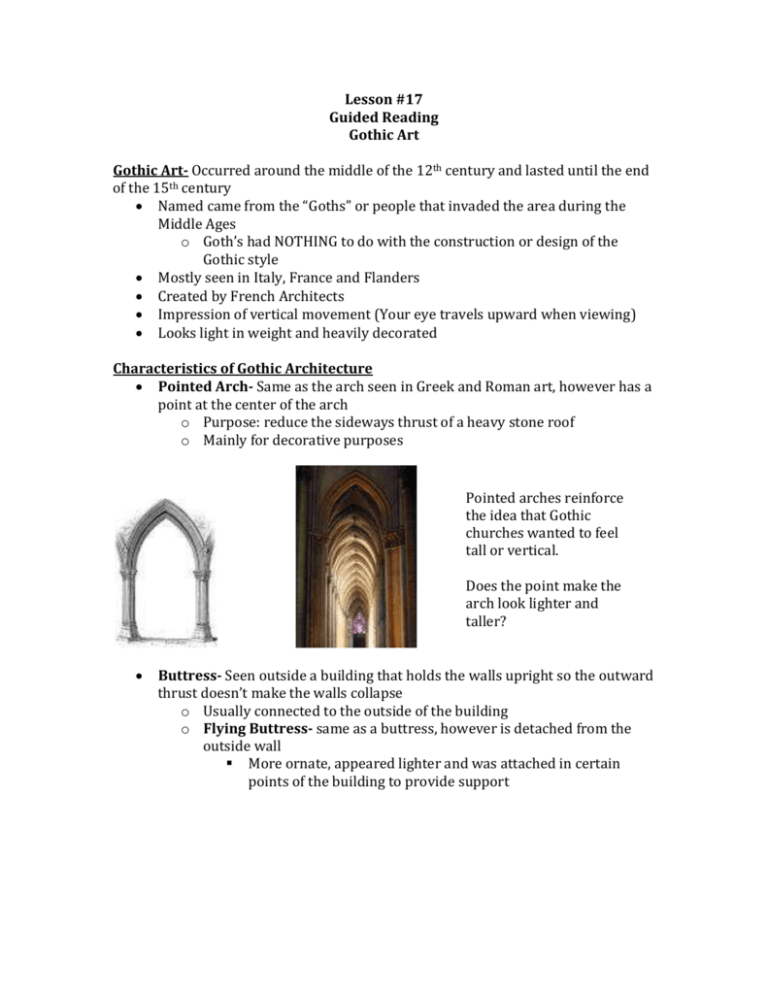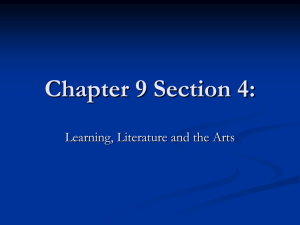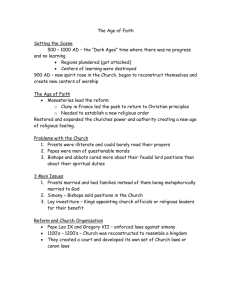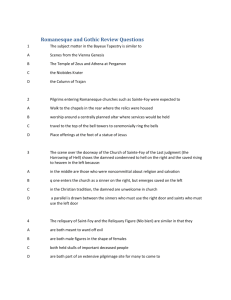File
advertisement

Lesson #17 Guided Reading Gothic Art Gothic Art- Occurred around the middle of the 12th century and lasted until the end of the 15th century Named came from the “Goths” or people that invaded the area during the Middle Ages o Goth’s had NOTHING to do with the construction or design of the Gothic style Mostly seen in Italy, France and Flanders Created by French Architects Impression of vertical movement (Your eye travels upward when viewing) Looks light in weight and heavily decorated Characteristics of Gothic Architecture Pointed Arch- Same as the arch seen in Greek and Roman art, however has a point at the center of the arch o Purpose: reduce the sideways thrust of a heavy stone roof o Mainly for decorative purposes Pointed arches reinforce the idea that Gothic churches wanted to feel tall or vertical. Does the point make the arch look lighter and taller? Buttress- Seen outside a building that holds the walls upright so the outward thrust doesn’t make the walls collapse o Usually connected to the outside of the building o Flying Buttress- same as a buttress, however is detached from the outside wall More ornate, appeared lighter and was attached in certain points of the building to provide support Notice how the pillars holding the walls of the church up are detached from the building. Notre Dame of Paris Flying buttresses are a key characteristic of Gothic churches, making them look more delicate and ornate. Stained Glass- created because there was no need for massive supporting walls due to the innovation in architecture o Large areas of the walls in a church were devoted to stained glass o Used to tell biblical stories o “lead the souls of the faithful to the light of God” o Created by… Color or pigment is added to the glass when it is in molten liquid form Glass is held together by lead strips and iron bars When assembled, the glass creates different images Stained Glass from the outside looks vastly different than it does when viewed from the inside. Left Picture= Inside Right Picture= Outside Stained glass needs light to be properly viewed Most stained glass was meant to tell biblical stories and depict different saints, just like mosaics were during the Byzantine Era. This image depicts female saints by using stained glass o Rose Window- classic representation of Gothic architecture Represents a blooming rose Always in a circular shape; very big deal because it took a lot of architectural thought, spreading the weight evening so the glass doesn’t break Mostly seen in Flamboyant Gothic Churches Although this image does not necessarily look exactly like a rose, it is in the shape and style of a rose. The radial design is the main characteristic of the rose window. Gargoyles- derived from the French word meaning “throat” o Looked like monsters or demons o Used as water spouts Rainspouts carried water from the gutters or roof to protect the stones and mortar of the building from erosion The International Style- refers to the Illumination Manuscripts, like we saw in the Middle Ages, that became more popular Illumination Manuscripts- done less by monks and more by workers in urban workshops Interested in showing realistic detail in their work Style appealed to the wealthy Demand spread to Western Europe, therefore, it was coined the International Style The Book of Hours- richly detailed book of prayers in an illumination manuscript style Created for Duke of Berry By the Limbourg Brothers from Flanders Three (3) brothers who specialized in Illumination Manuscripts Created their own style Figures looked more graceful and elegant Movement is suggested by the lines in the peoples robes, rather than the position of the figures Notice how detailed and colorful the Illuminations are. What is different from the Illumination Manuscripts from the Middle Ages and the Gothic Period? Can you see how the imagery is similar to that of a stained glass window? Does this look more like a picture in a book or a painting we would see around this era? The building seen in the middle and background is the Louvre. Looking at these similar churches, please describe the differences between Romanesque and Gothic churches. Use examples you see in the pictures. Romanesque Church Gothic Church _________________________________________________________________________________________________ _________________________________________________________________________________________________ _________________________________________________________________________________________________






